Project Description:
The Guilford Sound recording and production campus in Guilford, Vermont serves as a site for local and visiting artists and musicians to develop projects—both individually and with members of the Southern Vermont community. This five-bedroom residence allows artists to reside on the rural campus, within walking distance of the organization’s state of the art recording studio. The project is embedded into a gently sloping, south-facing hillside with views of the Ashworth valley and distant foothills of the Green Mountains.
A fully vegetated roof flows seamlessly into the field grasses on the hillside and an exterior stair, open to the sky slices through the building encouraging residents to walk up and explore the upper reaches of the surrounding site. The project is designed to meet International Passiv Haus (Passive House) standards and to achieve LEED Silver certification. These efforts will result in very low energy use for heating and cooling and a high level of interior comfort and air quality with temperature and humidity stabilized using the thermal mass of the structure and the hygroscopic buffering of a dense-pack cellulose insulation envelope.
Clad entirely in ¼” thick steel plate rainscreen, sandblasted and left to oxidize naturally on site, the exterior has a variegated appearance with different coloration and texture from plate to plate. Inside, the sleeping rooms are connected by a single hallway illuminated by a clerestory window above and a continuous backlit chalkboard designed to be used as tool for collaboration and a shared space for messages and notes.
Building Type Summary:
Other Awards:
AIA Vermont Design Excellence Award
Address:
Elevation:
Lat. / Long.:
Location Type:
Köppen Climate Type:
Climate Region:
Solar Insolation:
Annual HDD :
Annual CDD:
HDD Base Temp:
CDD Base Temp:
Occupancy Type and Details:
5 Bedroom dormitory with year round occupancy of different visiting artists in varying group sizes and short term use for larger events with up to 30 visitors. Projected use of 250 days per year.
Conditioned Floor Area:
Conditioned Building Volume:
Semiconditioned Floor Area:
Unconditioned Floor Area:
Multiple buildings?:
Total number of units in project (all buildings):
Total floor area of project (all buildings):
Historic?:
Completion date:
Site description:
Site sits on an open clearing in a sloped pasture with the building slid into the side of the slope. The planted roof of the building picks up the landscape and recreates the lost vegetaded area on the roof. Very little hard and impermeable surfaces ensure a natural rainwater management on site (LEED sustainable site criteria) Landscape disturbance and erosion control as per Vermont Act 250.
Materials:
LEED informed material choices with preference of regrowing materials (predominantly wood construction) and materials with high recycled content. Waste disposal and recycling in accordance with LEED requirements. Where possible insulation materials with low environmental footprint (cellulose). Low VOC materials and finishes for interior buildout.All wood materials FSC certified.
Energy Highlights:
For passive house requirements the building energy requirements for space heating and cooling, dehumidification, hot water generation and household electric demands including lighting are met at 37.8 kBTU/(ft2/year) or a yearly primary energy demand of 24,568 kWh (as per PHPP model). No on site renewable energy production is planned and due to recent building completion no actual energy use data is available at this time.
LCA Description:
No direct life cycle analysis was done but as part of LEED design criteria the construction was done with high level of waterproofing and moisture control details to assure a good airtightness and a long lifespan of the building. The well insulating and wind and air tight but vapor open wall assemblies with an exterior metal rain screen will have a long life span.
HERS Index:
Energy Star Score:
Datasets and Utility Bills sources and reliability:
Due to recent completion of the project no utility bills under typical use are available at this moment.
Energy Storage type:
NA
CHP System Description:
NA
Subslab assembly:
6" XPS insulation under concrete slab and 2" rockwool board above slab.
Slab edge assembly:
9" XPS insulation outbound of concrete foundation wall
Foundation wall assembly:
9" XPS insulation outbound of concrete foundation wall
Above grade wall assembly:
Double wood frame wall with 2x6 interior structural wall with blown in cellulose in cavities, and a second layer (staggered framing) of 9 1/2" TJI framing also filled with cellulose insulation. Exterior corten steel rainscreen over sheathing over weather barrier.
Flat attic assembly:
extensive green rood assembly
filter and drainage layers
9" XPS insulation
TJI roof structure with blown in cellulose in cavities
sheathing
interior finish (varies)
Door Area:
Space heating - Manufacturer & Model:
Space heating - capacity:
Space cooling - Manufacturer & Model:
Space cooling - capacity:
Domestic hot water - Manufacturer & Model:
Domestic hot water - capacity:
Domestic hot water - efficiency:
Ventilation - Manufacturer & Model:
Process:
The Guilford artists' residence building is part of a larger campus for artists and musicians for which Ryall Porter Sheridan Architects coordinated the renovation and addition to an existing farm house and also designed a new state of the art music recording studio. These first buildings were designed to have an integrated approach to energy use and are all heated through a central high efficiency wood burning furnace that distributes heat from a renewable fuel source to the individual buildings.
When it came to building the new residence hall for year round use the owners wanted to push the efficiency of the building even further to reduce the heating and cooling demand to a minimum. RPSA suggested the passive house standard and assembled a design team consisting of architects, passive house consultants, LEED raters (Efficiency Vermont) and the builder to work on the clients goal to creating a home for the community and for artists. Early design charrettes and regular team meeting throughout the design and construction process up to the final commissioning were held to ensured the building was designed and built according to the initial passive house targets.
Energy Modeling Software:
Passive House Planning Package PHPP V6.2
Outcome of project goals:
The diligence in the planning and construction process paid out and the building meets all the individual passive house design standards and will be certified as a Passive House Building in February 2016. The Building also will receive a LEED rating with a LEED silver certification in process.
Finances Description:
project costs not to be disclosed by owners request
Other incentives:
Efficiency Vermont High Performance Homes Completion Incentive
Efficiency Vermont complementary Energy Assessment and Project Support, including RESNET / HERS / VT RBES rating (including airtightness test and certification), and LEED certification
Published References:
AIA Vermont Website:
http://www.aiavt.org/awards/15awards/
project to be presented at Better Building by Design Conference of Efficiency Vermont February 3-4 2016, "Passive House Strategies - Outside the Box"
https://contractors.efficiencyvermont.com/bbd/schedule
Special architectural measures:
The building is oriented towards the south and generates the majority of the heating energy needed through solar and internal gains with shading strategies for the summer. The building is slid into the side of a sloped pasture and continues the landscape on its vegetated roof. Built to passive house standards with a highly insulated envelope and great attention to details (airtightness) the building maintains a comfortable interior climate mainly though these passive measures.
Energy Use and Production Documentation:
Subslab R-value:
Slab edge R-value:
Foundation wall R-value:
Above grade wall R-value:
Average window U-factor:
Solar Heat Gain Coefficient:
Visible Light Transmittance:
Door U-Factor:
Air Changes per hour, ACH50:
Project Photos:
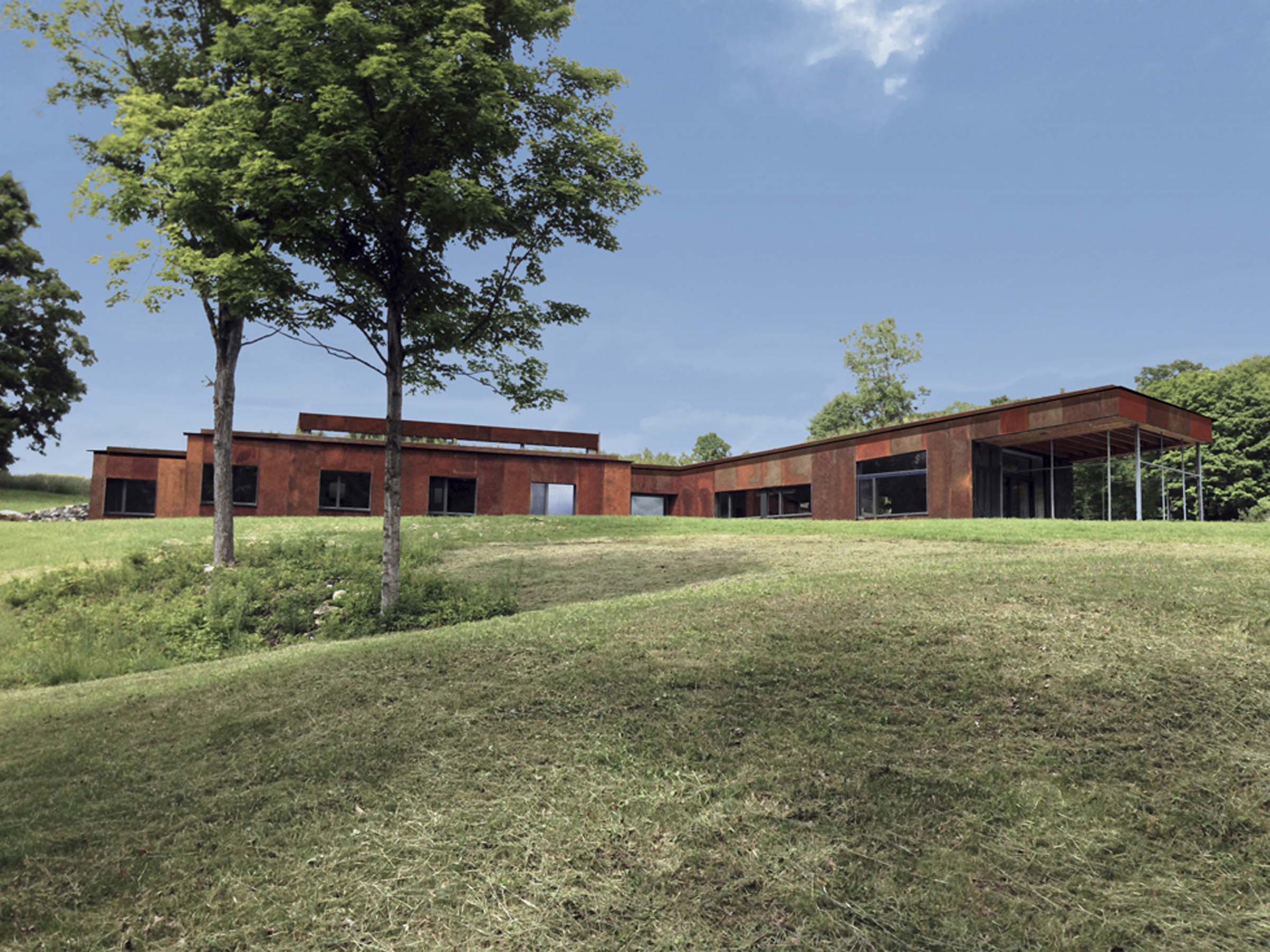
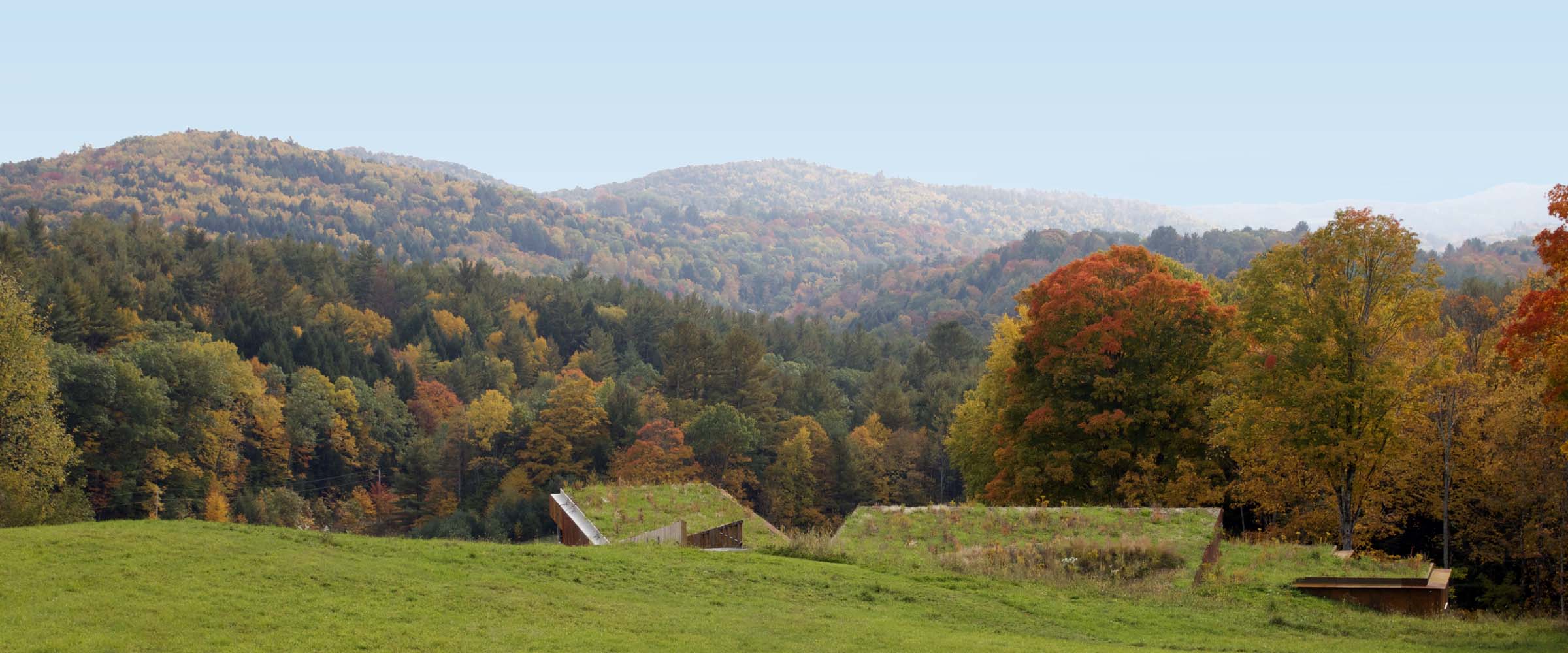
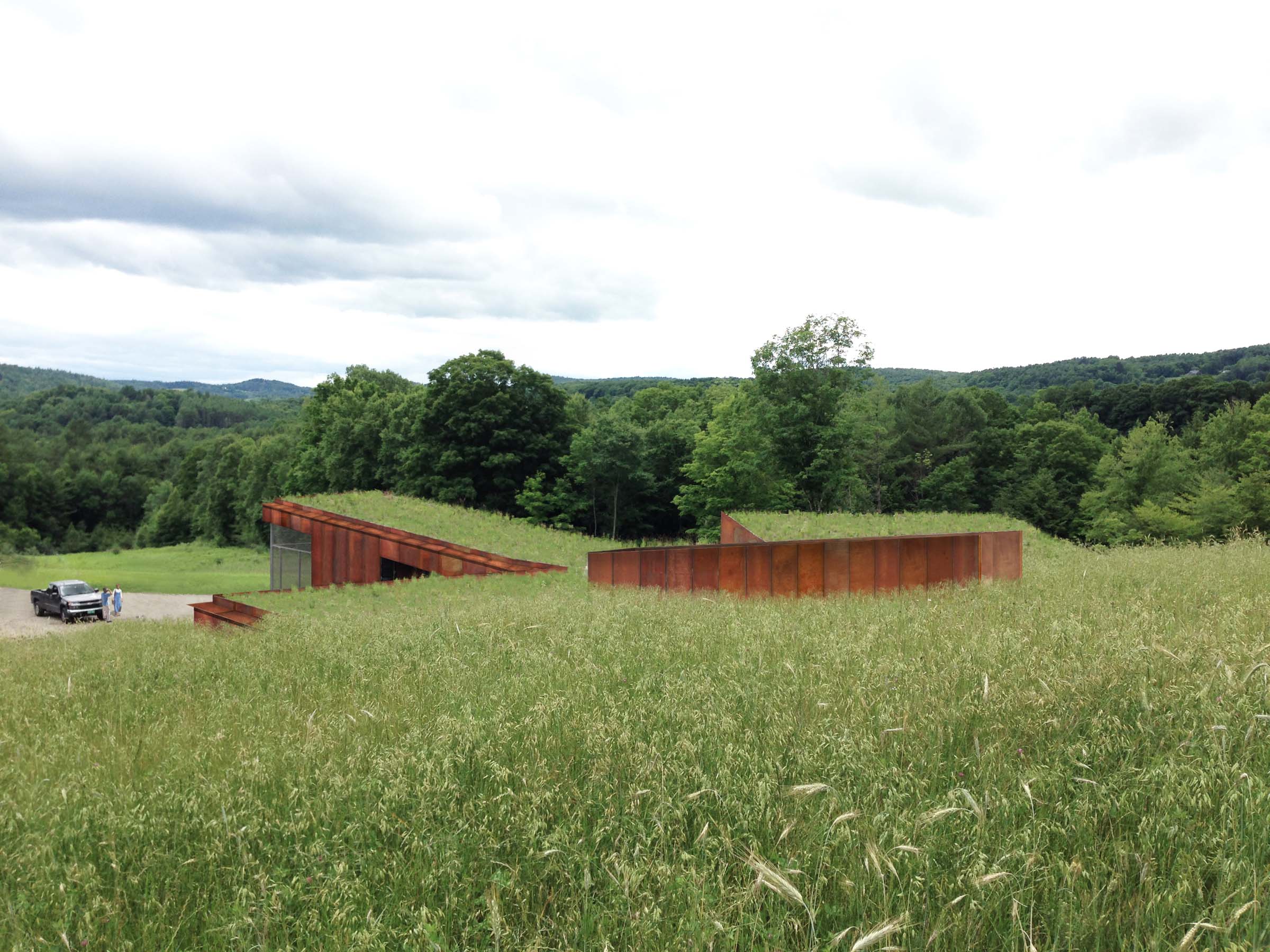
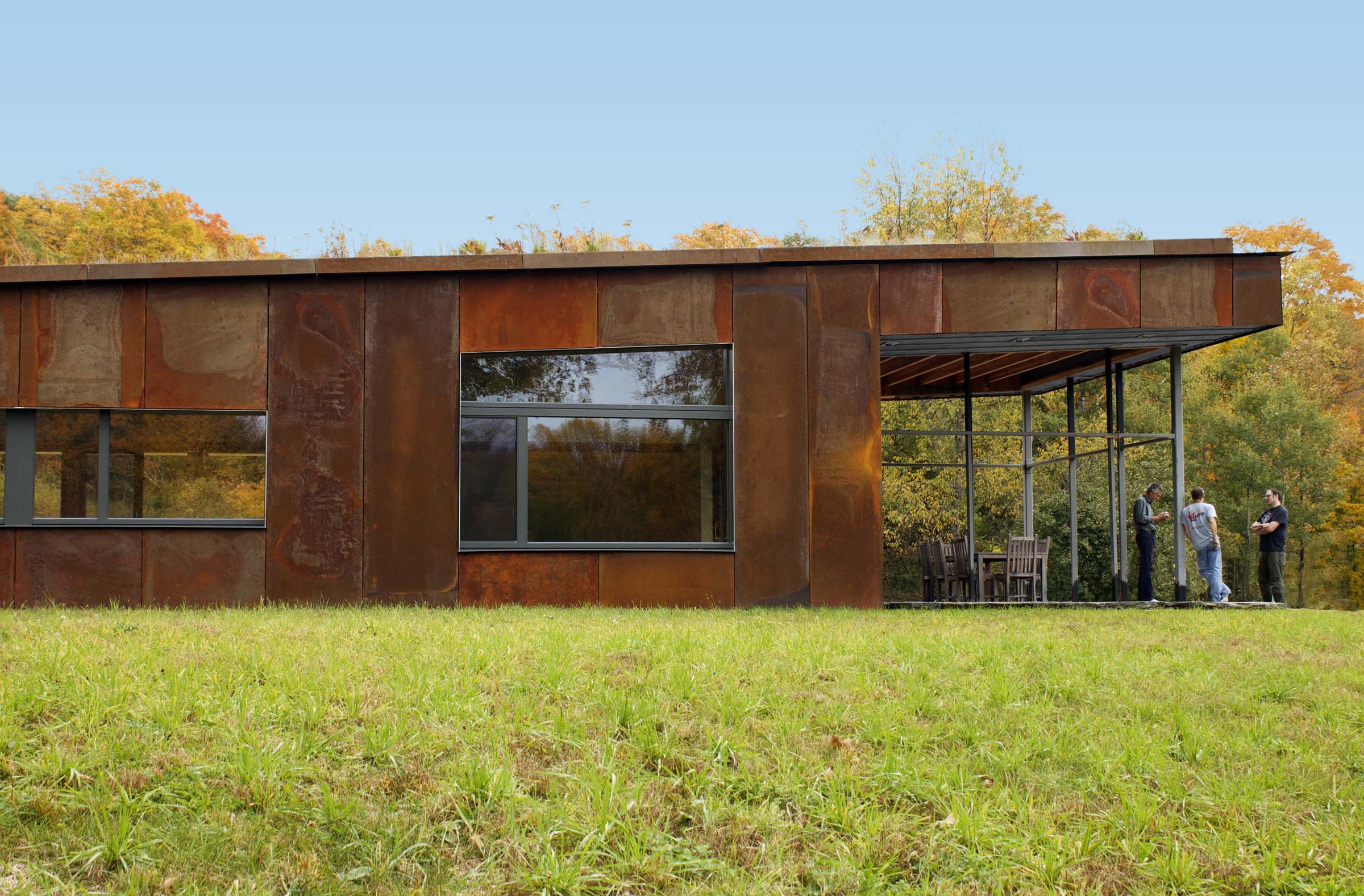
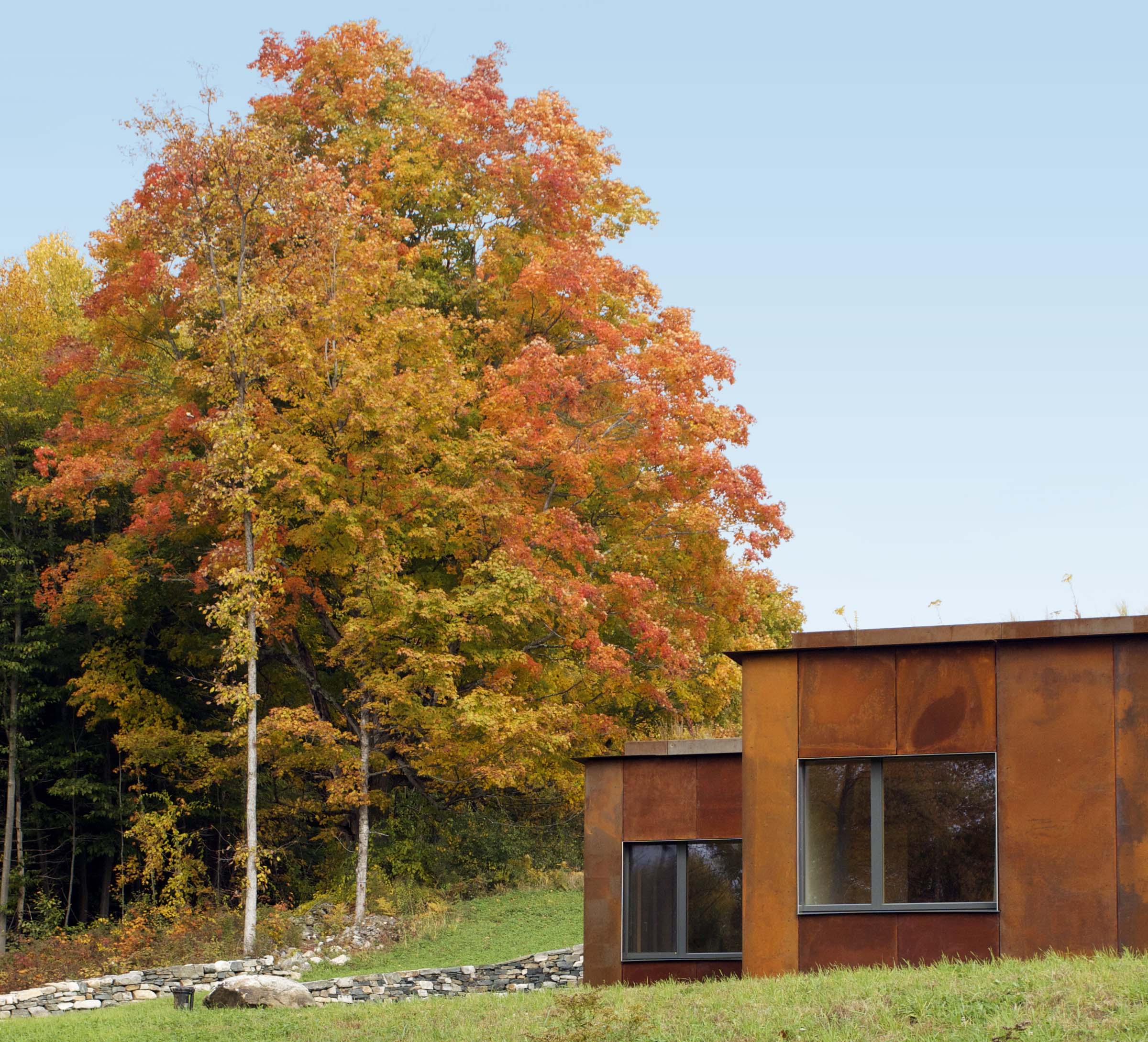
Number of Bathrooms:
Scope Description:
concrete foundation and retaining walls with wood structure
Site conditions:
Other Purchased Fuels Description:
None
Roof R-value:
Window Description:
Bieber Fineline Aluminum clad wood windows for passive house
Door Description:
All exterior doors glazed french doors:
Bieber Fineline Aluminum clad wood doors fir passive house
Number of Bedrooms:
Team Members:
Architect
Ryall Porter Sheridan Architects
Ted Sheridan AIA, ASA, LEED AP
Bill Ryall AIA, LEED AP, PHIUS
Ted Porter AIA
Sarah Jazmine Fugate
Niko Rychen
Lee McMahon LEED
Jörg Thöne
45 W 21 Street
New York, NY 10010
(212) 254-1175
(212) 254-1755
tsheridan@ryallporter.com
Civil Engineer
Matthew Beck
Jessica Rizio
Beck Engineering PC
P.O. Box 514
Bondville, VT 05340
(802) 297-3900
(802) 297-1970 (fax)
jrizio@beckengineeringpc.com
mbeck@beckengineeringpc.com
Structural Engineer
Kristin F. McCusker, P.E.
T.R. Fellows Engineering
163 Foss Street
Morrisville, VT 05661
802.318.7853
f 866.593.8131
kricket@mapleridgevt.com
Builder
Dave Ross
David Ross Builder
228 Stage Road
Guilford, VT 05301
(802) 380-1337 (cell- best number to call)
(802) 257-1378 (home)
Davidrossbuilderinc@myfairpoint.net
Mechanical Contractor
Kelly Tyler
A.L. Tyler and Sons
175 Canal St.
Brattleboro, VT 05301
802-254-9309
802-254-8272
kelly@altyler.com
www.altyler.com
Passive House Consultant
475 High Performance Building Supply
Floris Keverling Buisman
334 Douglass St
Brooklyn, NY 11217
800-995-6329
718-622-1600
floris@foursevenfive.com
Efficiency Vermont
Peter Schneider / Li Ling Young
Efficiency Vermont
128 Lakeside Ave
Suite 401
Burlington, VT 05401
888-921-5990
802-540-7735 directv
pschneider@veic.org
lyoung@veic.org

Mechanical Equipment Installation Details and Comments:
HVAC Equipment & Controls
Three HRV air exchange and cooling air ducts run in separate duct lines but are supplied to the spaces in a combined manifold. Balancing the airflow and conditioning supply is easy, while avoiding grill clutter in the rooms. The return air is exhausted from the bathrooms, the laundry room, and kitchen and returned to the HRV. All exhaust air is passed by the HRV where the incoming air is filtered and preconditioned. The dryers are non-vented heat pump dryers and therefore reduce the amount of moisture added to the interior to a minimum.
The low amount of space heating necessary is achieved through two 2-ton heat pumps.
Additional heating and cooling is supplied via a separate duct system connected to air handlers for the different zones terminating in the same manifolds as the fresh air supply. All equipment and distribution ducts are located in the conditioned crawlspace beneath the main spaces making them easily accessible for regular maintenance (e.g. filter replacement).
Energy Management Practice
With a focus on user friendliness for the frequently changing inhabitants of the artists’ residence, space conditioning is simple as possible while maintaining a high level of efficiency. The base level air exchange provides a healthy and comfortable air supply and maintains a stable temperature day and night. All bedrooms and common spaces have thermostats where individual space conditioning requirements can be easily programmed.
When the building is not occupied the ventilation system is switched to a low standby mode that provides a minimum air exchange and space conditioning. The gas boiler kicks in when electric heat pump efficiency drops below an efficiency threshold and supplies heat via the hydronic reheat coils in the air conditioning system.
Lighting: Indoor and Outdoor Lighting, Controls
Plenty of daylight is provided through large windows in the entry and common areas, a generous clerestory window over the main hallway continues the natural light distribution to the private quarters where even interior bathrooms receive natural light through translucent glass panels from the bedroom. All artificial lighting is supplied by high efficient LED or fluorescent lamps to maintain the overall primary energy consumption within the range of 38.0 kBTU/(ft2yr) for all energy used, including domestic appliance and lighting loads as prescribed by the Passive House standard.
Outdoor lighting is minimal and downward oriented to avoid night sky light pollution.